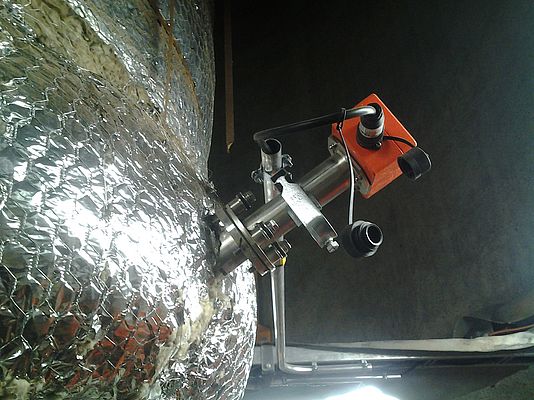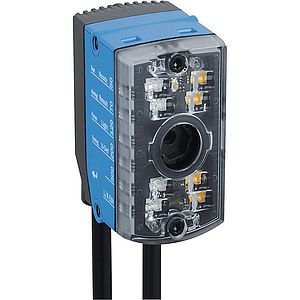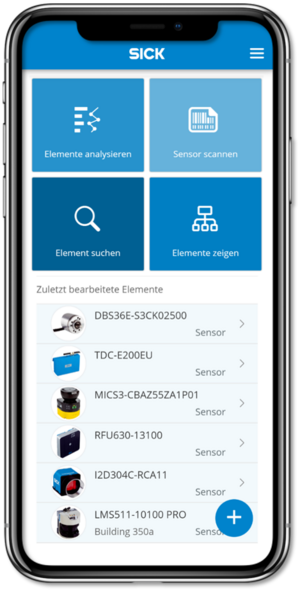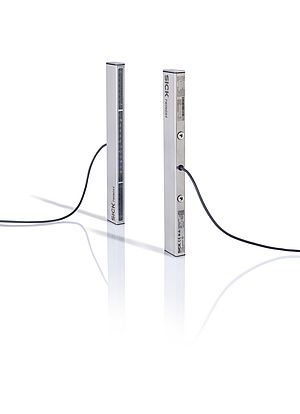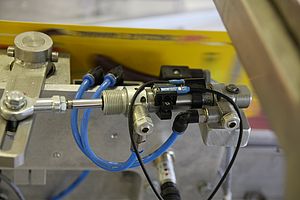Author: Kari Karhula, Product Manager Analyzers and Process Sensors, SICK Finland, Helsinki
Emissions trading requires facilities that generate greenhouse gases to take their own measurements and draw up reports concerning the volume of emissions that they produce. The EU directive that took effect at the beginning of 2013 saw the introduction of more stringent requirements when it comes to the accuracy of these measurements. The measurement uncertainty for high quantities of emissions must be below 2.5 percent. Vantaan Energia, an energy supplier based in Finland, has found a solution to this challenge - implemented in the power plant in Martinlaakso - thanks to the GHG-Control greenhouse gas measuring system by SICK.
Calculating the fuel-based greenhouse gas emissions for facilities run on oil or gas is relatively simple as these fuels are very uniform and the composition is known. Coal on the other hand is a different matter. That is because coal types can vary greatly in terms of composition, moisture levels, and other factors that affect the carbon content. Simply weighing the coal does not provide any reliable information or meet the required measurement uncertainty. Conventional solutions require coal-based power plants to weigh coal on the belt, take samples on a continuous basis, and set up a lab where these samples can then be analyzed. The values resulting from these processes can be used to calculate the amount of emissions produced. This calculation method involves high expense and an enormous amount of work.
Continuous greenhouse gas measurement in Martinlaakso
The power plant in Martinlaakso is one of the largest combined heat and power generation plants (CHP) in Finland. In 2013, the plant produced 14 percent of the electricity sold by Vantaan Energia and the majority of its district heat. The power plant has two boiler units, two steam turbines, and a separate gas turbine unit. Coal is the main source of fuel used in the Mar 2 boiler unit.
"The EU has issued a directive for the 2013 to 2020 emissions trading period. This directive specifies a maximum measurement uncertainty of 2.5 percent when measuring overall CO 2 emissions for our coal boiler," explains Samuli Björkbacka, mechanical engineer at Vantaan Energia. "In 2012, we examined all of the reporting requirements closely, comparing various measurement techniques and clarifying countless numbers of technical details. Using a conventional measurement method would have been very complicated. We also ruled out using field tests since this would have required us to take samples from the belt. We would have had to take and break up several samples an hour and then analyze a collective sample on an hourly basis. The costs incurred by this method would have been very high and would require an employee for half a working day on a permanent basis." Björkbacka explained that the GHG-Control CEMS solution developed by SICK to measure greenhouse gas was therefore considered as an alternative.
The GHG-Control greenhouse gas measuring system measures the concentration of CO 2 and, if necessary, the concentration of CO or N2O directly in the flue duct. The technology used in the GM35 in-situ IR gas analyzer examines the absorption of infra-red rays to measure the concentration of CO 2 in the duct while the FLOWSIC100 volume flow measuring device determines the transit time of ultrasonic signals to measure the gas flow rate. At least once a minute, all of the measured values collected are used to calculate the quantity of emissions. The final result gives an annual statistic for the hourly emissions load. The reliability and accuracy of the measurement plays a vital role. The GHG-Control greenhouse gas measuring system is practically maintenance-free. It has a 97 percent availability rate and its measurement uncertainty is less than 2.5 percent.
The challenge: accurate calibration
At the start, all signs seemed to indicate that emissions would not be able to be measured because a reliable system calibration would have been very complicated. To help overcome this issue, the company brought in experts from Indmeas Oy, a company specializing purely in industrial measurements, to help them analyze measurement uncertainty. The project team's biggest challenge was to verify the actual accuracy of the measurement system, combined with the question as to whether the system could be calibrated accurately enough. The solution to this challenge was natural gas, the boiler's supplementary fuel. Prior to the summer break, the boiler is run purely on natural gas for three to four days. The carbon content in natural gas is sufficiently uniform. The emissions flow speed and the precise diameter of the stack are needed in order to determine the volume flow. Measuring the diameter of the steel stack with accuracy to the nearest millimeter is relatively easy. However, thermal expansion must also be taken into account in order to meet the prescribed accuracy requirements. The company's business partner Indmeas was responsible for the accurate measurement and calculation as well as for issuing certification.
For regular system calibration, Indmeas takes a measurement prior to the summer break, examining the quantity of gas supplied to the boiler. It estimates the carbon content of the fuel while the plant is running on natural gas. It then measures the emissions flow rate and calculates the total quantity of carbon dioxide. This figure is calculated by measuring the concentration of carbon dioxide in the gases and then analyzing it in relation to the quantity of gas fed into the boiler and to the amount of coal burned.
Potential improvements for measurement and reporting
"For these measurements, we use a reporting system that records the measured values," explains Samuli Björkbacka. He goes on to confirm that this system works seamlessly. To date, the company has only had to carry out preventative maintenance work on the system. The quantity of emissions remains stable, particularly in winter when the boiler is running at full power. The quality of the coal is prone to fluctuate significantly. For example, the water content of coal is higher in winter than in summer." Depending on the current production situation, the coal boiler is run at various operational statuses. Previously, the emissions flow had been calculated using the flow equation and the angle of the fan blade. By the end of the period, this estimate was no longer correct. The flow equation is now no longer used and instead precise, realistic values are used to calculate the emissions load. "The belt scales previously used to weigh coal would not have met the latest set of requirements for determining the quantity of coal," says Björkbacka. A new measurement system provides much more accurate values and gives operators more opportunities to use this information to monitor the plant's processes. Björkbacka also explains that there is still further potential for improvement in measurement and Potential improvements for measurement and reporting "For these measurements, we use a reporting system that records the measured values," explains Samuli Björkbacka. He goes on to confirm that this system works seamlessly. To date, the company has only had to carry out preventative maintenance work on the system. The quantity of emissions remains stable, particularly in winter when the boiler is running at full power. The quality of the coal is prone to fluctuate significantly. For example, the water content of coal is higher in winter than in summer." Depending on the current production situation, the coal boiler is run at various operational statuses. Previously, the emissions flow had been calculated using the flow equation and the angle of the fan blade. By the end of the period, this estimate was no longer correct. The flow equation is now no longer used and instead precise, realistic values are used to calculate the emissions load. "The belt scales previously used to weigh coal would not have met the latest set of requirements for determining the quantity of coal," says Björkbacka. A new measurement system provides much more accurate values and gives operators more opportunities to use this information to monitor the plant's processes. Björkbacka also explains that there is still further potential for improvement in measurement and reporting processes as reporting is just as important as the measurements themselves.
Solutions for emission and process control in a new waste incineration plant
Vantaan Energia opened a new waste incineration plant in fall 2014. A number of gas analyzers, dust measuring devices analyzer solutions, and ultrasonic gas flow measuring devices by SICK were used in this new plant as well. The waste incineration plant is expected to generate 900 GWh of district heating output per year, which corresponds to an average of approximately 100 MW. This equates to almost two thirds of the district heating energy produced by the coal burner in Martinlaakso. For the past few years, the summer break there lasted two months but Samuli Björkbacka now estimates that the back-up period will be extended to five to six months. Now more heat is being generated by the waste incineration plant, the coal burner can been shut down earlier.
Vantaan Energia has always been conscious of the importance of corporate responsibility for energy companies. The company has made a number of changes that reflect their forward-thinking approach, not least the introduction of accurate emission measurement. The carbon dioxide emissions from the Martinlaakso plant are now measured in accordance with the exact level of measurement uncertainty prescribed by the EU. SICK's new technology saves time and resources.


